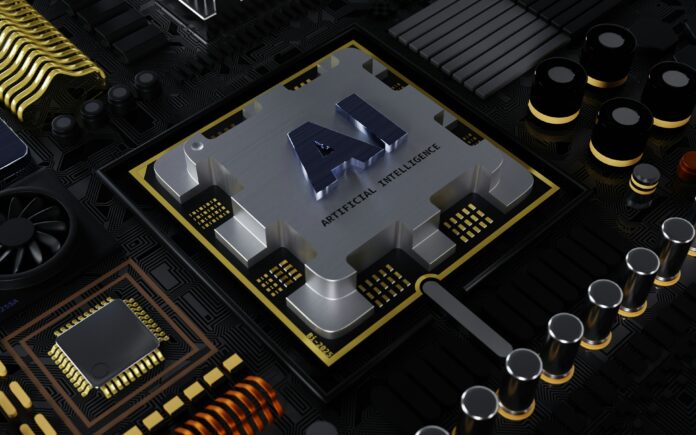Near Protocol has kicked off a new chapter for decentralised technology with its latest innovation: an AI agent capable of executing complex tasks across the digital and physical realms. Demonstrated at the Redacted conference in Bangkok on 10 October, Near co-founder Illia Polosukhin introduced an alpha version of the Near.AI Assistant, already turning heads with its versatility. What’s remarkable is its potential to not only create a backstory, design a website, and launch a memecoin in mere moments but also make real-world purchases, like finding and customising a T-shirt order.
Polosukhin, known for contributing to the groundbreaking Transformer research that laid the foundation for ChatGPT, showcased the assistant’s adaptability. Within seconds, he had it design a backstory and visual assets for a new Frog-themed memecoin before launching it on Near’s adaptation of Pump.fun. The assistant even whipped up a mock interface for web-based shopping, streamlining the purchasing experience. Although it doesn’t book flights or order takeaway yet, Polosukhin noted that the capability is in development, and the platform’s open nature invites anyone to add more agents for expanded functionality.
This isn’t just a flashy tech demo; it reflects Near’s broader strategy to integrate artificial intelligence deeply into blockchain infrastructure. According to Polosukhin, Near Intents play a pivotal role here, enabling seamless asset swaps across different chains. Unlike traditional cross-chain protocols that rely on atomic swaps or intermediary tokens like those on THORChain, Near’s approach uses a direct signature-based communication between smart contracts. This means you can effortlessly trade assets between Bitcoin, Ethereum, Arbitrum, Base, and Near, with the potential for future connections to fiat markets through liquidity providers.
Alex Shevchenko of Aurora Labs detailed upcoming expansions, revealing plans to incorporate Solana and the Telegram Open Network by year’s end. Additional networks like Dogecoin, Binance Coin, Bitcoin Cash, XRP, and Tron are also in the pipeline. The technology’s flexibility opens new opportunities for DeFi, including assets from chains previously sidelined due to limited smart contract support. Using Near Intents, even Bitcoin—usually confined to its ecosystem—can be collateralised for DeFi loans.
At the Redacted conference, Shevchenko illustrated this by plugging a MetaMask wallet into the system, executing a series of swaps from Tether to USD Coin and then to Bitcoin. These transactions, though settled on Near, could be immediately withdrawn to external wallets. Shevchenko stressed that Near’s method isn’t just a theoretical leap but a practical one, built for wide-scale adoption and integration. The entire setup is open source, welcoming further development and offering market makers like Peanut Trade and soon G20, to ensure robust liquidity.
Shevchenko and his team are eyeing a future where AI agents aren’t just one-off tools but active participants in a global digital economy. The idea is to have these agents communicate and collaborate, recognising gaps in each other’s abilities and forming contractual relationships. Imagine an AI agent that can’t open a bank account delegating the task to another specialised agent, negotiating terms, and arranging payment seamlessly. Back-end market makers would facilitate these trades, even tapping into centralised exchanges like Binance to complete them.
Kendall Cole from Proximity Labs later highlighted how chain abstraction could redefine DeFi’s interaction with Bitcoin. By connecting a Bitcoin wallet to a lending platform like Burrow, users could borrow against their Bitcoin holdings. The vision extends further: one day, borrowers could leverage their entire asset portfolio, maximising DeFi’s appeal to Bitcoin holders who’ve traditionally stayed away from more complex financial products.
The potential isn’t just in the tech but in its accessibility. By making this platform open source, Near ensures that developers and innovators can take the tools and integrate them wherever they see fit. Whether it’s incorporating it into existing crypto wallets or creating entirely new interfaces, the possibilities are endless. Builders can use the reference implementation or adjust it to their needs, opening the door to even more novel applications.
Near Protocol is taking AI and decentralised finance into uncharted territory, and while its full impact remains to be seen, the implications are already promising. It’s a move that not only sets the tone for where AI can go within blockchain but also marks a turning point in how different digital assets interact. By abstracting the complexities of cross-chain transactions and making AI accessible, Near is building a framework where decentralised and traditional finance might coexist more harmoniously.
With Polosukhin and his team setting their sights on an even grander AI model in the future, this could be just the beginning. And if the demo in Bangkok is anything to go by, it’s a future that won’t take long to arrive.


